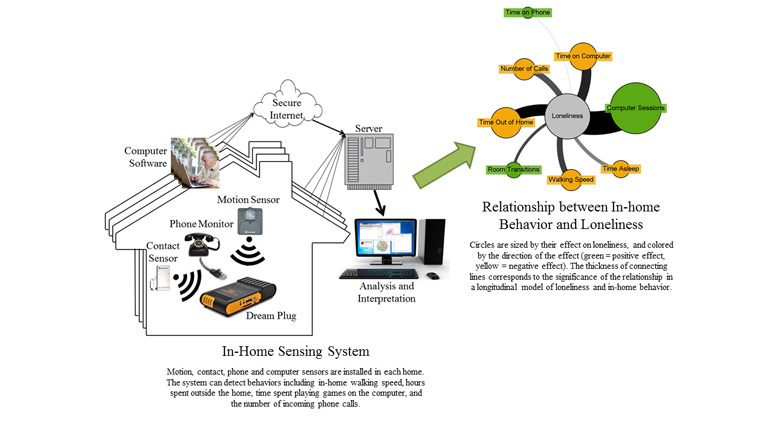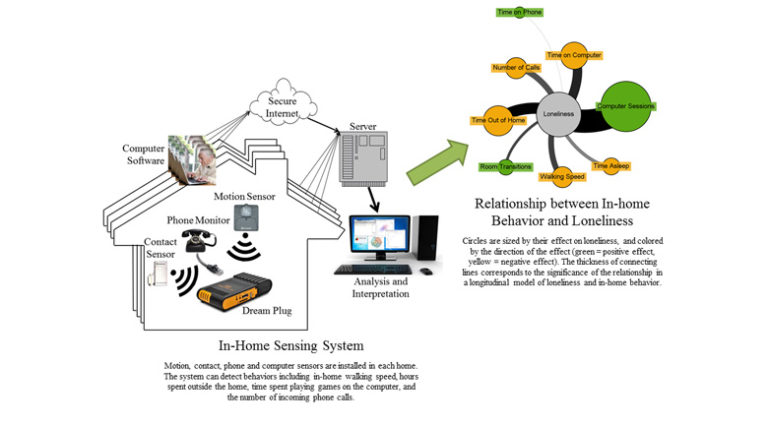
Loneliness is a common condition in older adults and is associated with increased morbidity and mortality, decreased sleep quality, and increased risk of cognitive decline. Assessing loneliness in older adults is challenging due to the negative desirability biases associated with being lonely. Thus, it is necessary to develop more objective techniques to assess loneliness in older adults. In this paper, we describe a system to measure loneliness by assessing in-home behavior using wireless motion and contact sensors, phone monitors, and computer software as well as algorithms developed to assess key behaviors of interest. We then present results showing the accuracy of the system in detecting loneliness in a longitudinal study of 16 older adults who agreed to have the sensor platform installed in their own homes for up to 8 months. We show that loneliness is significantly associated with both time out-of-home (???? = -0.88, p<0.01) and number of computer sessions (???? = 0.78, p<0.05). The R2 for the model was 0.35. We also show the model’s ability to predict out-of-sample loneliness, demonstrating that the correlation between true loneliness and predicted out-of-sample loneliness is 0.48. When compared with the UCLA Loneliness score, the normalized mean absolute error of the predicted loneliness scores was 0.81 and normalized the root mean squared error was 0.91. These results represent first steps toward an unobtrusive, objective method for prediction of loneliness among older adults, and mark the first time multiple objective behavioral measures have been related to this key health outcome.

